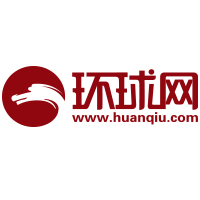
Once off-limits to anyone but authorized staff, factory workshops are now turning into high-tech wonderlands for curious young visitors.
Since opening to the public in April 2024, Chinese tech giant Xiaomi's automobile factory in Beijing has attracted over 150,000 people to sign up for visits, with an average of more than 10,000 visitors each month as of the first half of this year.
According to data released by online travel agency Ctrip, during the eight-day National Day and Mid-Autumn Festival holiday, educational tours centered on high-tech and heavy industry emerged as a surprise hit. Interest in aerospace and automotive manufacturing tours accounted for more than 20 percent of the market.
Inside the Xiaomi automobile factory, industrial robots swivel and assemble car components with remarkable precision, while autonomous mobile robotics logistics vehicles glide along their designated routes. At the center of the exhibition area, the armored cage frame of the Xiaomi SU7 appears to float in midair like a piece of futuristic art, instantly drawing every visitor's gaze.
"It's amazing — just like walking onto the set of a sci-fi movie!" said one visitor.
Designated as one of Beijing's industrial tourism demonstration sites for 2024, the factory offers an immersive experience that blends research and development, production, and visitor interaction. Powered by 419 industrial robots, 304 vision systems and 94 logistics robots, it presents a vivid showcase of intelligent manufacturing in action.
During the summer vacation, more than 1,000 teenagers visited CRRC Changchun Railway Vehicles Co., Ltd. to explore its high-speed train manufacturing base. Li Ke from the company's modern services division stated that key areas, such as the metro assembly line, are now open to the public. The open space spans over 60,000 square meters and attracts more than 3,000 visitors annually for educational tours.
According to Liu Boying, an associate professor at the School of Architecture, Tsinghua University, industrial tourism is a new form of travel that combines industrial aesthetics with science education. It makes technology tangible and accessible through real-world industrial settings.
At the Luobawang Luosifen Industrial Park in Liuzhou, south China's Guangxi Zhuang Autonomous Region, fully automated production lines hum with activity as they mix, sterilize and seal packets of river snail rice noodles that roll steadily off the line. After the tour, visitors can head to a self-service restaurant to pick ingredients, mix sauces and cook their own bowls.
"We've turned the factory into a tourist attraction by adding a river snail rice noodle exhibition center, a self-service restaurant and an exhibition zone for creative cultural products," said Zhou Wenling of Guangxi Luobawang Cultural Tourism Development Co., Ltd.
This shift from simple factory tours to immersive and hands-on experiences is also gaining clear policy support.
In February, Beijing sought public input on promoting the high-quality development of industrial tourism and proposed several themed routes. Yantai in east China's Shandong Province has proposed creating a route featuring gold-mining experiences, tours of ancient gold towns, themed performances and craft workshops.
Zhang Hui, director of the Modern Tourism Research Institute at Beijing Jiaotong University, noted that young travelers increasingly favor personalized, immersive experiences over simple sightseeing. They use travel to express their individuality and lifestyle. Industrial tourism that integrates local culture with interactive experiences meets this demand perfectly.
By the end of 2024, China had designated 122 national industrial tourism demonstration bases, 232 national industrial heritage sites and 10 heritage tourism bases, covering urban leisure, factory tours, museum exhibits and heritage sites. Industrial tourism is evolving from traditional heritage visits to more diverse and interactive modern formats.
China had more than 1,200 industrial tourism enterprises as of early 2024, with the market projected to exceed 100 billion yuan ($14 billion) by 2030, according to an industrial tourism research and forecast report covering the period from 2023 to 2028.

